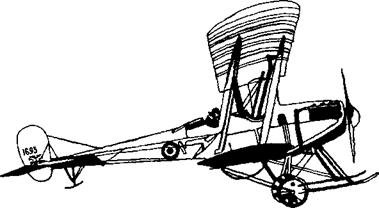AROUND THE WORLD IN NINE DAYS
It was 14 December 1986. The afternoon sun was weak. It could not kill the chill in the air over the Mojave Desert of California where the Edwards Air Force Base is located. However the cold did not dampen the enthusiasm of the men who scurried around the tarmac, in a state of excitement. The centre of their attention was ‘a weird and wonderful aircraft called The Voyager which looked like a deformed letter of the alphabet and carried its fuel in wings which could flex 30 ft (9 m) either way’.
It was a strange looking aircraft, no doubt. Yet it seemed just right for the grand trip round the world, nonstop, that Dick Rutan and his girlfriend Jeana Yeager had planned.
The idea for this daring trip was born about six years back while Dick, Jeana and Dick’s brother Burt sat at a bar, one evening.
Dick had been a fighter pilot. He had seen action in Vietnam, carried out several bombing sorties before his plane was downed. Luckily he was dumped into the South China Sea and picked up by a US rescue boat. After he retired from the Air Force, he joined his brother Burt, who was improving and experimenting with new designs for aircraft. Dick tested the new machines. Often he performed stunts at air shows. At one such show he met Jeana. She was an ace sky – diver and was preparing to fly helicopters. They became friends and then lovers.
Dick and Burt remembered their days in Oregon and
California, of their childhood obsession with flying, of the happy times they had designing and flying toy planes. The talks veered round to the challenges that aviation offered. Dick referred to a record set by US pilots in 1962. They had flown, non-stop, a distance of about 12,500 miles (20,000 km).
"That record can be broken," Burt lowered his voice.
Both Dick and Jeana looked up. Then came a funny idea. How about circling the earth non-stop in an aircraft? Burt calculated the distance that the aircraft would have to cover. It came to anything between 40,000 to 42,000 km. That was double the distance (slightly over 20,000 km) recorded by Air Force pilots in 1962. Yet Burt felt it could be done. He said he would design a special aircraft. It would have to be light, yet strong and sturdy. It would carry enough fuel to power the flight around the earth. That would make the aircraft a virtual ‘flying fuel tank’.
Dick looked at Burt, winked at Jeana and grinned, "Jeana and I shall fly the aircraft, try to girdle the earth nonstop". Dick later recollected, "I knew from that instant that we were going to do the thing or die trying".
Burt had built several sail planes and sports aircraft. He took just a few minutes to mentally conceive a design of the aircraft that could possibly make the round trip possible. He pulled out a paper napkin and drew the design on it. Dick and Jeana examined it. They felt a little uneasy about the weird design, but they kept their fears to themselves. Burt detailed his plans. Over the weeks, the design started gaining clarity. Burt spoke of using graphite fibre and aluminium frames to make the aircraft very light. He estimated its weight at about 900 kg.
Room for fuel gained top priority. The aircraft would need to take along 3,100 kg of aviation fuel. Burt said he would fix 17 fuel tanks. They would be placed wherever space could be found—under the wings, in the fuselage, even in the outrigger booms that firmed up the wings. That set severe pressure on space. The squeeze on space led to a cockpit, hardly 7.5 feet by 3.5 feet (2.3 m x 1.1. m). Here, Burt grinned, Dick and Jeana would have to work, eat, sleep and relax, spend around 10 days. Irene Rutan, mother of the two boys, took one look at the cabin and snapped, "You didn’t design that with people in mind". Burt softly purred, "No, Ma, I didn’t. I designed it to go round the world".
To reduce weight, Burt cut down on the oxygen needed to keep the fliers in comfort while flying at altitudes ranging from 8,000 to 12,000 ft (2,400 m to 3,600 m) to the minimum; scrapped insulation needed to make the aircraft soundproof, cut down on heavy fuel gauges. Burt, however, offered to power the aircraft with twin engines. That was the only concession he offered.
Dick and Jeana winced at the hardships that they would have to face. It was not going to be easy, they agreed. Records could not be broken nor created the easy way.
Burt estimated the cost of the aircraft at $2 million. That was a fabulous sum. Where would the funds come from? Burt had gained a reputation in the field of aviation. That stood him in good stead when he passed the hat around for financial and material help. Every donation was hailed as assistance coming from a VIP (Voyage Important People). Many corporate bodies donated instruments, tools and gadgets to equip the aircraft.
It took the team six years to produce the weird aircraft. It was named The Voyager. It cost the team less than $2 million. Burt joked, while showing his creation to the member of the press, "It would have been $400 million if a Pentagon contractor had built on a cost-plus and over-time basis".
In July 1986, Dick and Jeana carried out a test flight, flew a distance of 18,600 km, non-stop. It took them four and a half days and just half the fuel on board to complete the flight. This success emboldened them.
They waited for setting out on the historic flight round the earth. Burt carried out rigorous check of every part of the aircraft. Finally he declared it airworthy.
The date for the final takeoff was announced.
On 14 December 1986, Dick and Jeana shook hands with friends and officials on the tarmac and climbed into the cockpit. Dick sat behind the controls, started the engines, waited till they gained enough thrust and then let the aircraft cruise along the runway. The aircraft picked up speed, but the wings, heavy with fuel, dipped and dragged. Burt who was following The Voyager, in a spotter plane, got a shock. The Voyager was not gaining the requisite lift even after covering most of the runway A crash seemed inevitable. He warned Dick over wireless to abort the flight. But the message did not go through. Burt watched, his heart in his mouth, when the miracle happened. The aircraft rose in the air with just about 200 metre of runway to spare. Burt’s hopes rose, only to sink almost instantly when he noticed that the tips of the wings had been damaged. He advised Dick to sever the tips off. That was a risky operation. But Dick managed to reach out of the cockpit, donning a parachute, and clip the damaged tips off.
The first day’s flight was smooth and uneventful. The wings, even though chipped, did not pose a problem. On the second day, while over the sea near the Philippines, the aircraft faced a cyclone. Dick swerved, kept out of the eye of the cyclone with wind speed of 75 miles (120 km), taking a longer route, often gaining extra speed from the tailwinds. Then came a new danger. The aircraft had to be steered through a narrow corridor that lay between hostile Vietnamese airspace and dangerous weather pockets. The pilots managed to get through, safely. On the fourth day, the aircraft flew over Kandy in Sri Lanka. The pilots enjoyed the grand sight of sunset from their lofty flying perch. They flew over Africa on the fifth day. Weather forecasts indicated air turbulence at lower levels. So Dick and Jeana flew at 20,000 ft (6,000 m), using both engines to gain the required lift.
The deafening noise produced by the aircraft was wrecking their mental balance. The constricted space troubled them. Time seemed to stretch into infinity. Every hour they spent on the aircraft seemed to be as long as a day. They wished they had room enough to stretch their legs. They craved for a good long undisturbed sleep. But these luxuries lay beyond their reach. That often left one or the other of them sulking, at times, and often, in bad mood. There were times when they cursed themselves for being so foolhardy. Once, even Dick, who usually never grumbled, let the guard down and told his brother, Burt, who was monitoring the flight from the ground: "I’m tired. I want to go to bed in California. Vector me home". But Jeana cheered him, told him that they were almost home, more than halfway through! When fair weather held, the two joked, sang together old ditties, felt confident of completing the mission. But often the weather turned foul; or the aircraft developed trouble. They however clung on, determined to do or die.
They received a fright during the last lap of the journey. The gauges indicated that the rear engine was getting overheated. What had caused the trouble? It didn’t take them long to realise that they had not replenished its oil supply in time. They took quick remedial steps. The engine began to behave normally.
Every passing day made life more miserable. How the two wished their ordeal would end! Yet this was an ordeal they had chosen to face willingly. They could not drop out, midway. They had covered more than four-fifths of the girdle. "This too would pass", they drew courage.
While flying over Brazil, the aircraft ran into a turbulence, heeled over, one wing pointing at the sky above, one at the sea below. Dick and Jeana were tossed around for a considerable period. They worked at the controls, managed to lift the aircraft beyond the turbulence. Bad weather over the Caribbean forced them to reroute the flight over Panama and the West Coast of Mexico.
Finally, on the ninth day after take off, The Voyager zoomed over the sky, touched down at the Air Force Airport at Mojave Desert. The tyres screeched when the brakes bit into them and forced them to stop whirling. Then the aircraft came to a dead stop.
Dick quickly grabbed a cowboy hat, set it at an angle on his head and emerged from the cramped cockpit, flashing the victory sign. Right behind him appeared Jeana, beaming a smile that reflected the abiding joy within. Instantly the two were sucked into a cheering crowd of admirers and friends, and reporters. Thousands of flash bulbs blew their tops off recording the tumultuous scenes at the airport.
It marked their finest hour. They had flown an aircraft, girdled the earth non-stop and thus created a record. This record would remain forever. Dick struck the right note, after the historic flight, "Life is an opportunity. It’s only limited by what you can dream about".
Ronald Reagan conferred on Dick, Jeana and Burt the Presidential Citizen’s medal and noted, "When we saw you coming home—so ungainly yet so graceful—well, that’s about the best present America could have had". Dick replied, with a merry chuckle, "This is done by individual citizens of this great country who had the freedom to pursue a great dream".
The three had truly made a great dream come true.











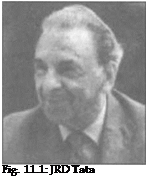 JRD joined the family’s business house (Fig. 11.1). In between, he took time to fly planes. Around that time, the Imperial Airways planned a flight between London and Calcutta via Karachi. A friend,
JRD joined the family’s business house (Fig. 11.1). In between, he took time to fly planes. Around that time, the Imperial Airways planned a flight between London and Calcutta via Karachi. A friend, It was 14 December 1971. India was at war with Pakistan. A Gnat detachment was moved to Srinagar. A 25-year-old ace pilot, Sekhon, who had flown the Gnat on several missions, was standing at the window of the duty room at Srinagar. He drew the collar closer as the chill wind wafted in. Then he heard the deafening scream of the siren. He noticed four Fig u 2. sekhon
It was 14 December 1971. India was at war with Pakistan. A Gnat detachment was moved to Srinagar. A 25-year-old ace pilot, Sekhon, who had flown the Gnat on several missions, was standing at the window of the duty room at Srinagar. He drew the collar closer as the chill wind wafted in. Then he heard the deafening scream of the siren. He noticed four Fig u 2. sekhon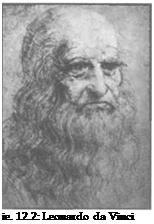
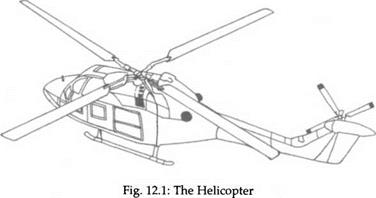
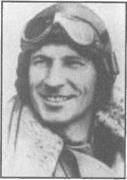 The first name that comes to mind is of Sir George Cayley. He tracked down the forces that needed to be controlled before one could fly. These were Tift, drag, thrust and gravity’. He developed the controlling mechanisms to counter-balance these forces and thus provide balance to the flying object. He shaped the horizontal rudder (or elevator), experimented with multiple-wing designs, thought of the propeller. For over forty years, he worked. Finally, in 1849, he decided to test fly his tri-plane glider. He strapped a 10- year-old boy on to the glider and tested it at the open grounds close to his home Brompton Hall. The glider soared in space.
The first name that comes to mind is of Sir George Cayley. He tracked down the forces that needed to be controlled before one could fly. These were Tift, drag, thrust and gravity’. He developed the controlling mechanisms to counter-balance these forces and thus provide balance to the flying object. He shaped the horizontal rudder (or elevator), experimented with multiple-wing designs, thought of the propeller. For over forty years, he worked. Finally, in 1849, he decided to test fly his tri-plane glider. He strapped a 10- year-old boy on to the glider and tested it at the open grounds close to his home Brompton Hall. The glider soared in space.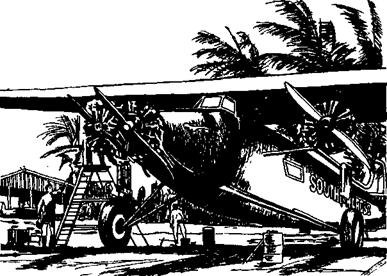

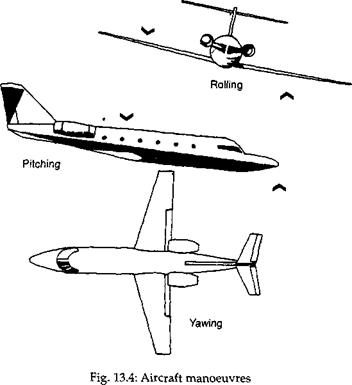
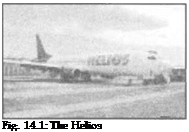 Remember Burt Rutan who designed the Voyager? In December 1986, Dick Rutan and Jeana Yeagar flew the aircraft, round the globe, non-stop and created history. Now (in January 2005), Steve Fossett—the first person to circumnavigate the globe solo in a balloon—is all set to perform a similar feat. He will be flying the aircraft GlobeFlyer—solo— designed by Burt. The flight is expected to be completed in 70 hours.
Remember Burt Rutan who designed the Voyager? In December 1986, Dick Rutan and Jeana Yeagar flew the aircraft, round the globe, non-stop and created history. Now (in January 2005), Steve Fossett—the first person to circumnavigate the globe solo in a balloon—is all set to perform a similar feat. He will be flying the aircraft GlobeFlyer—solo— designed by Burt. The flight is expected to be completed in 70 hours.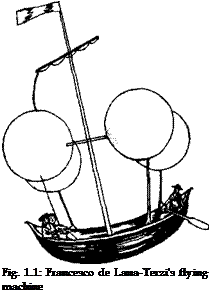 Leonardo da Vinci, the famous artist, was an innovator too. He too wanted to fly. But he was not foolhardy. He noticed that objects, heavier than air, flew for very short duration. But gravity slowed them down and forced them to the earth. He studied the design of the boomerang used by the aborigines of Australia. He read about gliders, popular in China. He watched birds in flight. Slight movement of the wing or tail helped eagles glide in space on air currents without flapping the wings. Da Vinci sat down and drew pictures of wings and tails of various birds. He designed a birdlike flying machine. Can a machine take off verticall? He tried the airscrew machine, which is the forerunner of the helicopter. He tested the design of a parachute.
Leonardo da Vinci, the famous artist, was an innovator too. He too wanted to fly. But he was not foolhardy. He noticed that objects, heavier than air, flew for very short duration. But gravity slowed them down and forced them to the earth. He studied the design of the boomerang used by the aborigines of Australia. He read about gliders, popular in China. He watched birds in flight. Slight movement of the wing or tail helped eagles glide in space on air currents without flapping the wings. Da Vinci sat down and drew pictures of wings and tails of various birds. He designed a birdlike flying machine. Can a machine take off verticall? He tried the airscrew machine, which is the forerunner of the helicopter. He tested the design of a parachute.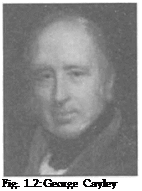 Sir George Cayley got a bright idea. "Success in flight would come", he said, "by making a surface support a given weight by the application of power to the resistance of air" (Fig. 1.2). In 1853, he built a glider. Its wing surface was 200 square feet. It had three pair of wings and a tailpiece. The wings curved more on top than on the bottom. (This design was backed by Bernoulli’s principle. An object, with a flat base and a curved top, reduces air pressure on top. This results in upward thrust). Cayley mounted the glider on wheels. It had room for a man. Cayley’s coachman got on to the glider. The glider was pulled fast across a vast open ground. It gained the speed needed to take off.
Sir George Cayley got a bright idea. "Success in flight would come", he said, "by making a surface support a given weight by the application of power to the resistance of air" (Fig. 1.2). In 1853, he built a glider. Its wing surface was 200 square feet. It had three pair of wings and a tailpiece. The wings curved more on top than on the bottom. (This design was backed by Bernoulli’s principle. An object, with a flat base and a curved top, reduces air pressure on top. This results in upward thrust). Cayley mounted the glider on wheels. It had room for a man. Cayley’s coachman got on to the glider. The glider was pulled fast across a vast open ground. It gained the speed needed to take off.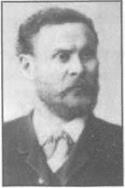 William Henson hailed him ‘The Father of Aviation’. He improved the design of Cayley by adding two pusher propellers and managed a short flight. He dreamed of air travel to Egypt and beyond. That ended as a pipe dream. He moved to America and spent his life advocating further research into aviation.
William Henson hailed him ‘The Father of Aviation’. He improved the design of Cayley by adding two pusher propellers and managed a short flight. He dreamed of air travel to Egypt and beyond. That ended as a pipe dream. He moved to America and spent his life advocating further research into aviation.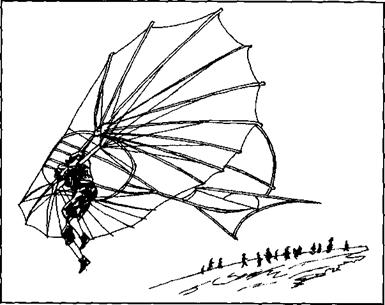
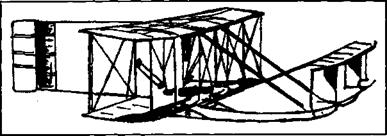
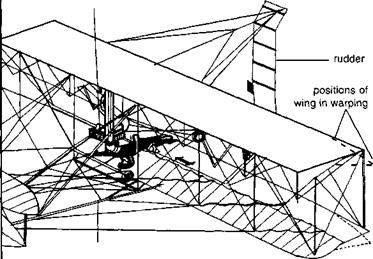
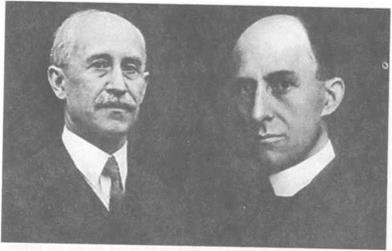

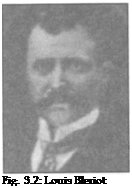 The risk was worth taking, thought Louis Bleriot, of France (Fig. 3.2).. Flying was his hobby. He was a daredevil. Many were the tumbles that he took during his previous flights with kites and gliders. He had broken his skull; pulled his calf muscle; limped for a fortnight after being thrown out of a glider, as it came in to land; received hard knocks and severe bruises on several occasions.
The risk was worth taking, thought Louis Bleriot, of France (Fig. 3.2).. Flying was his hobby. He was a daredevil. Many were the tumbles that he took during his previous flights with kites and gliders. He had broken his skull; pulled his calf muscle; limped for a fortnight after being thrown out of a glider, as it came in to land; received hard knocks and severe bruises on several occasions.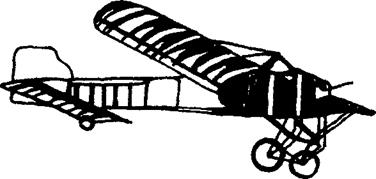
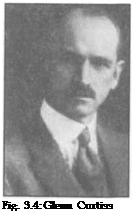 He tried again. This time, he covered nearly 2 km. Sweet were the fruits of success. Curtiss savoured his victory.
He tried again. This time, he covered nearly 2 km. Sweet were the fruits of success. Curtiss savoured his victory.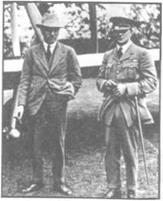 "This is one flight I can undertake. If only I can find a sponsor, who gets me an aircraft and also provides funds to equip it…" Alcock didn’t complete the sentence.
"This is one flight I can undertake. If only I can find a sponsor, who gets me an aircraft and also provides funds to equip it…" Alcock didn’t complete the sentence.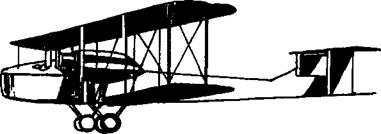
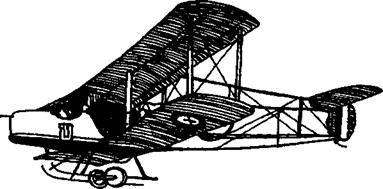
 The roar of the engines was loud.
The roar of the engines was loud.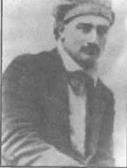 This was just the beginning. Soon came a brilliant idea. Can’t single-seated aircraft fly over enemy territory and drop bombs? That marked the birth of bombers. New designs improved the speed and manoeuvrability and fighting power of the aircraft.
This was just the beginning. Soon came a brilliant idea. Can’t single-seated aircraft fly over enemy territory and drop bombs? That marked the birth of bombers. New designs improved the speed and manoeuvrability and fighting power of the aircraft.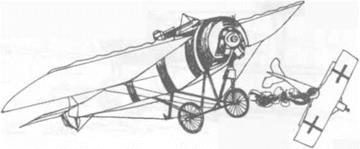
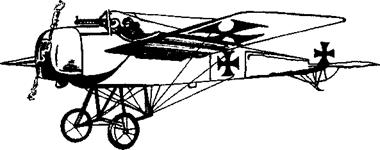
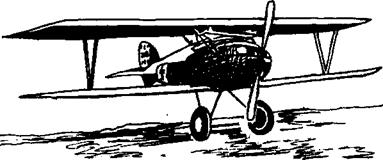
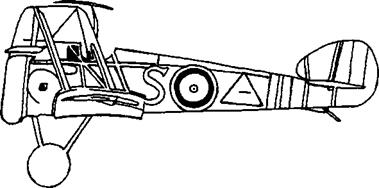
 The formation of the Royal Air Force came months before ■’ – y J d. В t, ‘ the brief span, the newly designed fighter aircraft hunted down
The formation of the Royal Air Force came months before ■’ – y J d. В t, ‘ the brief span, the newly designed fighter aircraft hunted down